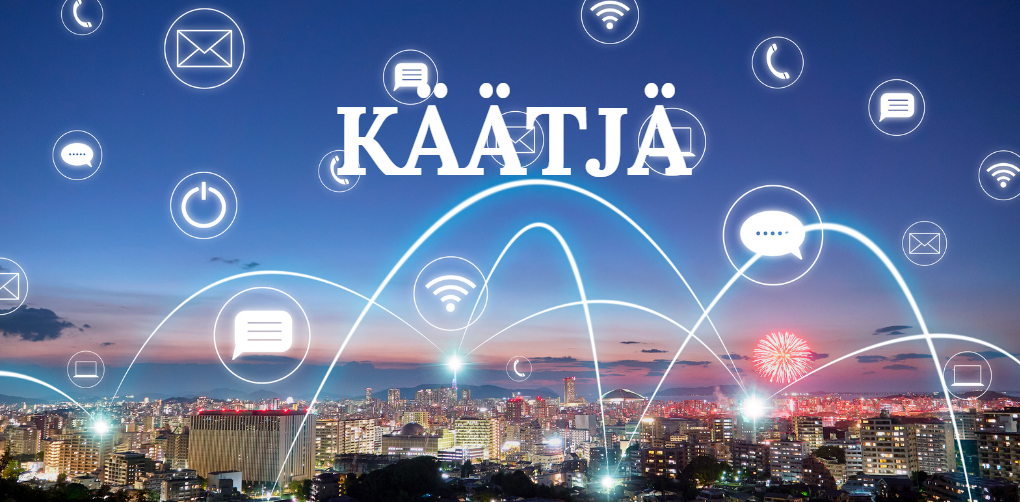Language translation has advanced greatly thanks to AI tools, making accurate and efficient translation services more accessible than ever. Käätjä services lead this transformation, providing strong solutions for individuals and businesses needing reliable translation.
Table of Contents
ToggleIntroduction to Käätjä Services
The Importance of Accurate Translation
In our globalized world, accurate translation is crucial for effective communication across cultures and languages. Whether for business, travel, or personal use, precise translations ensure that messages are conveyed correctly, preventing misunderstandings and fostering better relationships.
Benefits of Using Käätjä Services
Käätjä services provide numerous benefits, including speed, accuracy, and cost-effectiveness. Leveraging AI technology, these services can handle large volumes of text quickly, ensuring high-quality translations that are contextually appropriate and culturally sensitive.
Understanding Käätjä
Definition and Significance
Käätjä refers to advanced translation services that utilize artificial intelligence to enhance the accuracy and efficiency of translations. These services are designed to meet the growing demand for reliable translation in various sectors, including business, healthcare, legal, and entertainment.
Historical Background of Käätjä
The concept of käätjä has roots in the traditional translation methods but has evolved with the integration of AI technologies. Over time, käätjä services have transitioned from manual, human-driven processes to sophisticated AI-powered tools, revolutionizing the translation industry.
Traditional Translation vs. Käätjä
Human Translators
Historically, human translators have been essential for accurate translation. Their deep understanding of languages and cultural nuances allowed for precise translations. However, human translation is often time-consuming and expensive, particularly for large-scale projects.
Manual Translation Processes
Manual translation involves a detailed process where human translators analyze and convert text from one language to another. This method, while accurate, is limited by the translator’s availability and capacity, making it less suitable for urgent or high-volume translation needs.
Advantages of Käätjä
Käätjä services overcome these limitations by using AI to automate and streamline the translation process. This approach not only speeds up translation but also reduces costs, making high-quality translation services more accessible.
AI’s Role in Käätjä
How AI Enhances Käätjä
AI plays a pivotal role in käätjä by using machine learning and natural language processing (NLP) to understand and translate text accurately. AI algorithms can analyze vast datasets, learn from them, and improve translation quality over time.
Key Technological Milestones
Significant milestones in AI translation include the development of neural networks and deep learning models. These technologies have greatly improved the ability of AI to understand context and nuances in language, leading to more accurate translations.
Benefits of AI Integration
Integrating AI with käätjä services offers several benefits. AI can handle complex translations quickly, support multiple languages, and continuously improve through learning, ensuring that translations remain accurate and relevant.
Mechanics of AI Käätjä Translation
Neural Networks and Machine Learning
AI käätjä services rely on neural networks and machine learning to process and translate text. Neural networks mimic the human brain’s function, allowing the AI to learn and adapt, while machine learning algorithms enhance the AI’s ability to improve over time.
Natural Language Processing (NLP)
NLP enables AI to understand and interpret human language. By analyzing sentence structure, context, and meaning, NLP allows AI to produce translations that are not only accurate but also contextually appropriate.
Data Training for Accuracy
The accuracy of AI translation tools depends on the quality and quantity of data used for training. By feeding these tools with diverse datasets, developers can improve their ability to handle different languages and contexts accurately.
Popular AI Käätjä Tools
Overview of Leading Tools
Several AI translation tools have become popular for their efficiency and reliability. Examples include Google Translate, DeepL, and Microsoft Translator, which offer robust translation capabilities and user-friendly interfaces.
Features and Capabilities
These tools provide a range of features, including real-time translation, voice recognition, and text-to-speech functionality. They support multiple languages and can handle various types of content, from simple text to complex documents.
User Reviews
User reviews highlight the effectiveness of AI käätjä tools in delivering accurate translations quickly. Positive feedback underscores the tools’ ability to handle diverse languages and contexts, while constructive criticism helps developers address any shortcomings.
Ensuring Translation Accuracy
Challenges in Accurate Translation
Achieving high accuracy in translation is challenging due to the complexity and diversity of languages. AI translation tools must continuously evolve to address these challenges and deliver precise translations.
Contextual Translation
Understanding context is crucial for accurate translation. AI translation tools use NLP and contextual analysis to ensure that translations are contextually relevant, maintaining the original meaning and intent of the text.
Handling Idioms and Slang
Idiomatic expressions and slang pose significant challenges for translation. AI tools leverage extensive datasets and contextual analysis to identify and accurately translate these expressions, preserving their intended meaning.
Efficiency and Speed in Käätjä Services
Balancing Speed and Accuracy
While traditional methods prioritize accuracy, they can be time-consuming. AI käätjä services balance speed and accuracy, offering rapid translations without compromising quality, making them ideal for businesses with urgent translation needs.
Cost-Effectiveness
AI käätjä services provide a cost-effective alternative to traditional translation methods. By automating the process, businesses can reduce reliance on human translators, resulting in significant cost savings.
Scalability of AI Tools
One of the major advantages of AI käätjä tools is their scalability. These tools can handle large volumes of text, making them suitable for businesses of all sizes. Whether it’s translating a few paragraphs or entire websites, AI translation tools ensure consistent and accurate translations.
Case Studies: Successful Käätjä Implementation
Real-World Applications
Many businesses have successfully implemented AI käätjä tools to enhance their operations. For example, multinational companies use these tools to localize marketing content, customer support, and internal communications, improving efficiency and customer satisfaction.
Business Impact
The impact of AI käätjä on businesses is significant. These tools enable effective communication across different languages, allowing businesses to expand their reach and build stronger relationships with global audiences.
Key Takeaways
Successful implementation of AI käätjä services highlights the importance of choosing the right tools, training staff, and continuously improving translation quality. By learning from these examples, other businesses can effectively leverage AI translation to achieve their communication goals.
Cultural Sensitivity in Käätjä Translation
Importance of Cultural Context
Cultural context plays a crucial role in translation. AI käätjä tools incorporate cultural sensitivity to produce translations that are not only accurate but also culturally appropriate, ensuring that messages resonate with the target audience.
Avoiding Misunderstandings
Cultural misunderstandings can have significant consequences, from marketing blunders to diplomatic incidents. AI translation tools help prevent such misunderstandings by understanding and addressing cultural differences.
Best Practices
To achieve culturally sensitive translations, it’s essential to consider the cultural context of the target audience. AI translation tools, combined with human oversight, ensure that translations are both accurate and culturally relevant.
Conclusion
Efficient language translation with käätjä services is transforming communication in our interconnected world. By leveraging advanced AI tools, käätjä services provide accurate, efficient, and culturally sensitive translations, enabling seamless communication across languages and cultures. Businesses and individuals can overcome language barriers, expand their reach, and achieve their communication goals with the help of käätjä services.
FAQs
What are the main benefits of AI käätjä tools?
AI käätjä tools offer speed, accuracy, and cost-effectiveness. They can process large volumes of text quickly and provide translations that are contextually appropriate, making them ideal for businesses and individuals who need efficient and reliable translation services.
How do AI käätjä tools handle idiomatic expressions and slang?
AI käätjä tools use natural language processing (NLP) and contextual analysis to identify and accurately translate idiomatic expressions and slang. This ensures that the translated text retains its original meaning and cultural relevance.
What factors should businesses consider when choosing a translation service?
Businesses should consider factors such as accuracy, speed, cost, scalability, and user reviews when choosing a translation service. Evaluating these factors helps ensure that the chosen service aligns with the business’s communication goals and requirements.
How can businesses ensure the quality of translation output?
Businesses can ensure the quality of translation output by implementing robust quality assurance processes, collecting and analyzing user feedback, and continuously updating and training AI translation tools. Combining AI with human oversight also helps maintain high standards of accuracy and context.
What role do human translators play in the era of AI translation?
Human translators complement AI translation tools by providing expertise in language nuances, cultural context, and domain-specific knowledge. They ensure that translations are accurate and contextually appropriate, adding a final layer of quality assurance.
What are some common misconceptions about AI translation?
Common misconceptions about AI translation include the belief that AI tools can replace human translators entirely and that they are only suitable for simple texts. While AI tools offer significant advantages, they still require human oversight for complex and nuanced translations.





